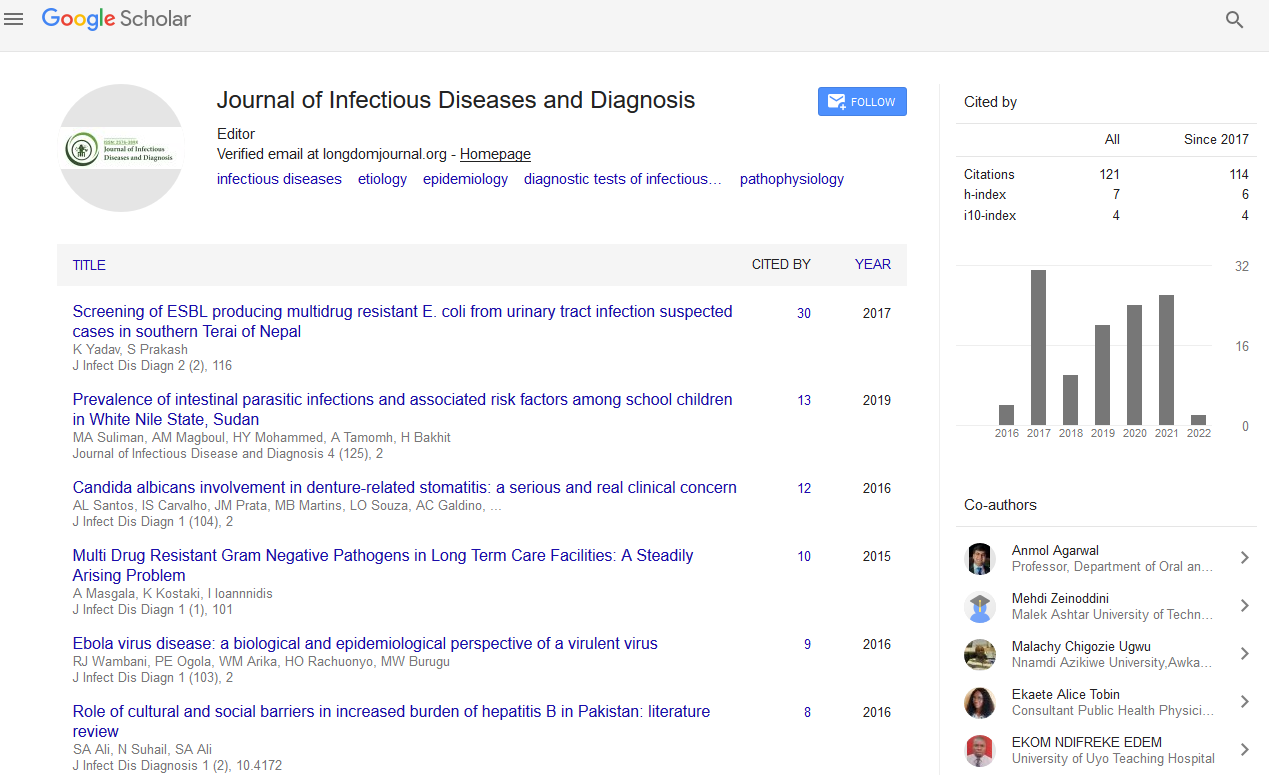Indexed In
- RefSeek
- Hamdard University
- EBSCO A-Z
- Publons
- Euro Pub
- Google Scholar
Useful Links
Share This Page
Journal Flyer

Open Access Journals
- Agri and Aquaculture
- Biochemistry
- Bioinformatics & Systems Biology
- Business & Management
- Chemistry
- Clinical Sciences
- Engineering
- Food & Nutrition
- General Science
- Genetics & Molecular Biology
- Immunology & Microbiology
- Medical Sciences
- Neuroscience & Psychology
- Nursing & Health Care
- Pharmaceutical Sciences
Abstract
Clinical, Radiological Features and Outcome of COVID-19 Patients in a Secondary Hospital in Jakarta, Indonesia
Ali Murutuza Hafiz, Aziz Ghan Iksan, Dian anni, Riz Aul, Andarini, Febrina Sus, Louris Eldin
Background: Amount of people infected with SARS-CoV-2 in Indonesia especially in Jakarta as the epicenter continues to rise. Limited published clinical data, scarcity and long turn over time of diagnostic testing put clinician, especially in primary and secondary hospital setting, in dilemma to make assessment and diagnosis. Our hospital (Budhi Asih Hospital) is a secondary referral hospital in East Jakarta has been designated for isolation and management of suspected and confirmed cases of COVID-19.
Objective: We try to describe the clinical, radiological and outcome features of COVID-19 in our hospital in order to help clinician make appropriate assessment within the setting of limited resources of a secondary referral hospital.
Methods: This is an observational case series study from confirmed COVID-19 patient in our hospital from first case admission on March 17, 2020 to April 30, 2020. We collected patient’s demography, symptoms, exposure history, comorbidities, therapy, outcome, laboratory, chest x-ray and ECG consecutively. This study has been approved by our hospital ethics committee (No.47/KEP-ETIK/IV/2020).
Results: From March 17, 2020 to April 30 2020, there were 30 confirmed COVID-19 cases, 16 (53.3%) were male. Clinical symptoms were dyspnea in 22 (73.3%) and dry cough 16 (53.3%). Comorbidities were diabetes in 14 (46.6%), hypertension 10 (33.3%) and Coronary Artery Disease (CAD) in 10 (33.3%) patients respectively. Laboratory findings showed lymphopenia in 21 (70%) patients, increased inflammation marker in Erythrocyte Sedimentation Rate (ESR), C-Reactive Protein (CRP) and Lactate Dehydrogenase (LDH) 21 (70%), 23 (76.6%) and 12 (40%) patients respectively. Twenty-seven (90%) cases had abnormal Chest X-Ray(CXR) and mostly severe18(60%). Descriptive finding for images included consolidation 16(53.3%) and Ground Glass Opacities (GGO) in 10 (33.3%) patients. Of 18 patients who underwent Electrocardiogram (ECG), abnormal ECG were found in 13 (72%) of them.
Conclusion: Based on our findings, most cases of COVID-19 admitted in secondary referral hospital were already in moderate to severe stages. This is most likely due to late referral from primary care and unspecific clinical features resemblance of other infectious diseases such as dengue, typhoid fever or other influenza. Inflammation marker, Neutrophil-to-lymphocyte ratio (NLR) and CXR are cost effective findings and can be used as a disease severity marker in primary health care to determine further referral. Furthermore, since cardiac dysfunction are also present in most cases, this warrant further investigation. Public awareness of signs, symptoms, early diagnostic testing protocols and case findings were important to reduce severity of diseases.
Published Date: 2020-07-21; Received Date: 2020-06-30


